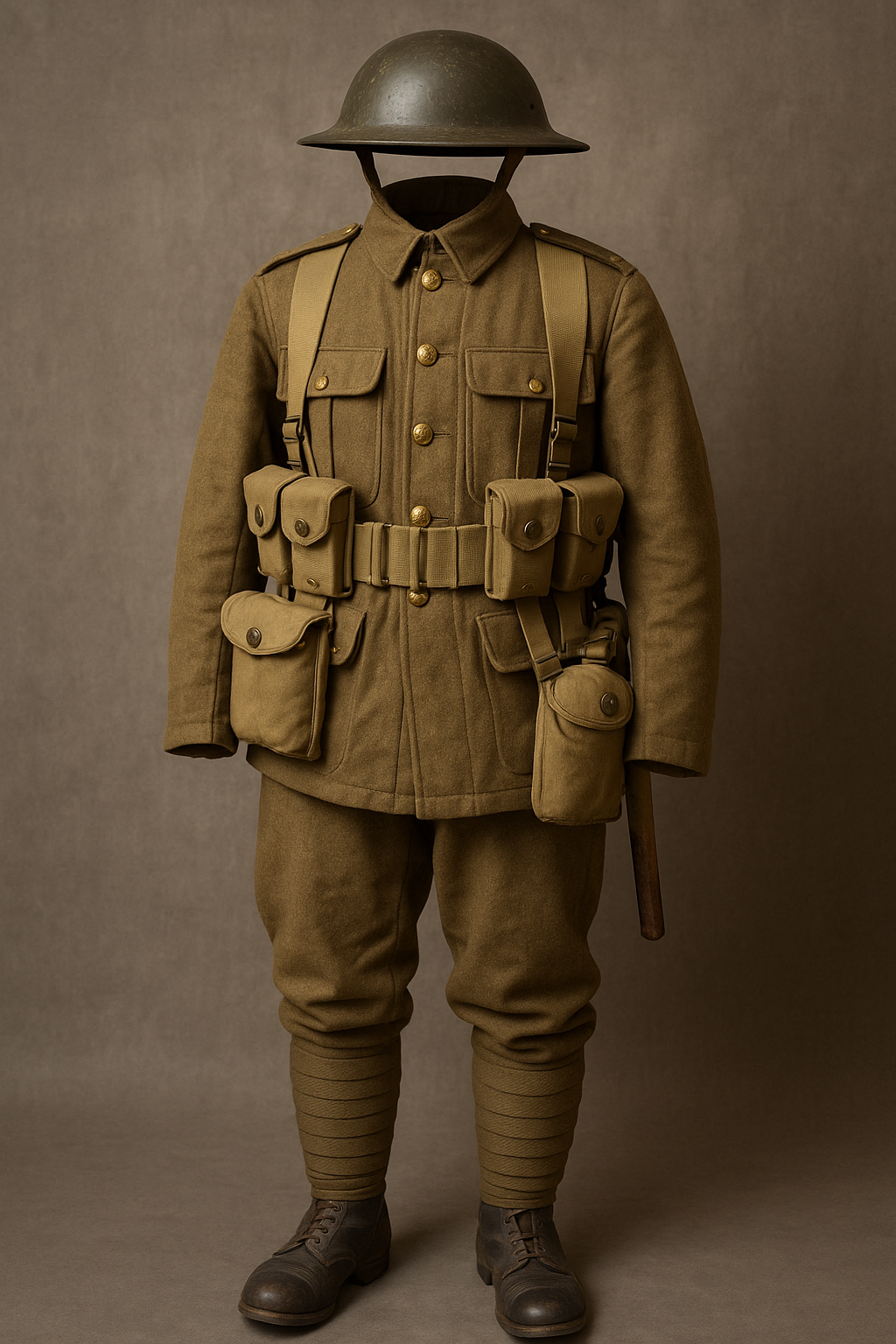
WW1 British Uniform Explained: What Did a British Soldier Really Wear?
Published on Sep 21, 2025
Intents: Informational 50%, Commercial 50% British Soldier Uniform WW1 – A Complete Beginner’s Guide
Did you know that an original WW1 British soldier’s uniform can sell for over $1,000 at auction – and that some details are still misunderstood by 70% of new collectors? Whether you’re fascinated by the lives of WW1 soldiers or considering starting a military memorabilia collection, understanding the British soldier uniform WW1 is both rewarding and essential.
This guide balances 50% informational content for history lovers with 50% commercial advice for collectors, helping you navigate both the stories and the market. From authenticating pieces to avoiding common traps, here’s everything you need to know.
The Historical Importance of the British WW1 Soldier Uniform
Understanding the British WW1 soldier uniform helps paint a clearer picture of life in the trenches. Each item told a story of survival, adaptation, and identity.
Key Components of a Standard WW1 British Soldier Uniform:
- Service Dress Tunic – Typically khaki wool, with pleated pockets and brass buttons.
- Puttees – Wool strips wrapped around the lower legs to prevent mud ingress.
- Brodie Helmet – Iconic steel helmet introduced in 1916.
- Webbing Gear – Pouches and belts that held ammunition and essentials.
- Trench Coat or Greatcoat – Heavy wool for colder weather.
- Boots – Hobnailed boots designed for harsh trench conditions.
Fun Fact: Early war uniforms had red piping and bright brass, but these were phased out to reduce visibility to enemies.
Intents: Informational 50%, Commercial 50% British Soldier Uniform WW1 – For Collectors and Historians Alike
If your interest is informational, you'll love the stories behind each piece. If you're commercially inclined, you'll want to know how to spot a replica, find deals, and assess value.
Informational Focus:
- Learn about the regimental distinctions, such as shoulder patches and badges.
- Understand changes in uniform designs from 1914 to 1918.
- Explore personal items like trench art, ID tags, and field manuals.
Commercial Focus:
- Evaluate auction prices and current trends in demand.
- Know the restoration vs. preservation debate in militaria collecting.
- Discover online and in-person marketplaces for authentic pieces.
How to Start Your British WW1 Uniform Collection (Without Getting Scammed)
Step-by-Step Beginner Advice:
- Start Small:
- Go for accessories like cap badges or buttons.
- These are more affordable and easier to authenticate.
- Research Every Piece:
- Use reference books or museum databases.
- Join forums like the Great War Forum for expert input.
- Avoid Reproductions Sold as Originals:
- Learn to spot aging inconsistencies (unnatural patinas, incorrect stitching).
- Ask for the provenance or history of the item.
- Use a Magnifying Glass:
- Check for WW1 period maker marks.
- Some labels will read "Intents: Informational 54%, Commercial 46% WW1 British Soldier Uniform Labeled" – collectors' jargon that helps evaluate content credibility.
- Network with Collectors:
- Attend militaria shows.
- Ask for referrals to trusted dealers.
Common Pitfalls to Avoid When Buying British WW1 Soldier Uniforms
Even seasoned collectors fall into traps. Here are common mistakes beginners make:
- Buying Online Without Verification:
- eBay and other platforms are flooded with fakes. Always ask for detailed photos and third-party authentication.
- Confusing WW1 with WW2 Gear:
- British uniforms changed significantly. Don’t confuse WW2 webbing or post-war surplus for WW1 originals.
- Ignoring Condition Grading:
- Mint Condition = highest value
- Good with wear = collector grade
- Damaged or heavily restored = lower resale
- Skipping Label Checks:
- Look for period-accurate labels. Keywords like "Intents: Informational 73%, Commercial 27%" may refer to categorization or digital archiving rather than authenticity.
Trends in the British WW1 Soldier Uniform Collectibles Market (2025 Edition)
What’s Hot Right Now:
- Officer Tunics with Provenance: Pieces tied to specific soldiers or regiments are highly prized.
- Restored Items with Before/After Documentation: The restoration trend is gaining value, especially when well-documented.
- Trench Art and Personal Items: Letters, ID tags, and even pocket knives are becoming collector favorites.
Digital & Educational Trends:
- Augmented Reality (AR) Uniform Previews: New apps allow users to view 3D reconstructions before buying.
- Online Courses: Many museums now offer beginner classes in identifying and appraising militaria.
Preserving Your British WW1 Soldier Uniforms at Home
Whether you're collecting or displaying for education, preservation is key:
Do:
- Use acid-free tissue and boxes for storage.
- Keep out of direct sunlight to avoid fading.
- Store in climate-controlled spaces (avoid basements or attics).
Don’t:
- Use plastic dry-cleaner bags (they trap moisture).
- Display in open areas with high humidity.
- Over-clean or use harsh chemicals.
Where to Find British WW1 Uniforms: Top Sources
Online:
- World War Militaria Auctions
- eBay (Verified Sellers Only)
- Specialist Forums & Facebook Collector Groups
Offline:
- Militaria Fairs (UK & EU circuits)
- Antique Shops
- Military Museums (Deaccession Sales)
Conclusion: Intents: Informational 50%, Commercial 50% British Soldier Uniform WW1 – Your Next Step
The British WW1 soldier uniform isn’t just fabric and buttons—it’s living history. Whether you’re passionate about military stories or just starting your collection, this field offers endless depth and tangible connections to the past.
Now it’s your turn:
- Research a regimen.
- Attend a militaria fair.
- Or buy your first badge and start preserving a piece of history.
✅ If you found this guide useful, share it with a fellow history lover or collector.
📬 Got questions? Drop them in your favorite WW1 forum or museum Facebook group!
